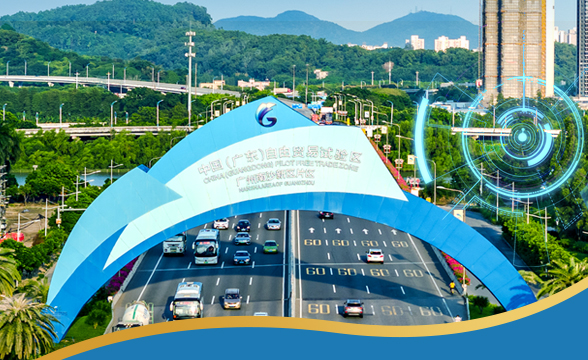Convenient transportation speeds up Nansha
Guangzhou plans to build 11 high-speed rail stations and five urban high-speed rail lines to interconnect with neighboring cities in the future. Nansha, a district of Guangzhou, will be the beneficiary of this transportation network.
In accordance with the draft Guangzhou Municipal Land and Resources Master Plan (2018-2035) the Guangzhou-Shenzhen second high-speed railway has been connected to Guangzhou East Railway Station with an estimated top speed of over 600 kilometers per hour. With that Nansha realized direct access to Guangzhou, Hong Kong, Macao and Shenzhen in 30 minutes.
It takes only 15 minutes to go from Guangzhou to Shenzhen and only 20 minutes from Guangzhou Baiyun Airport to Shenzhen Baoan Airport.
Guangzhou also plans to add the Guangzhou-Zhongshan-Zhuhai-Macao high-speed railway. The main line runs from Guangzhou East Railway Station to Zhuhai’s Hengqin. The branch line extends to Knowledge City in Zengcheng district, and connects with Pazhou, which will promote the balanced development of the west and the east sides of the Pearl River.
The Guangzhou-Zhongshan high-speed railway and the Jiangxi-Shenzhen (Beijing-Kowloon) high-speed railway Nansha branch line increase the number of Guangzhou-Shenzhen-Hong Kong high-speed railways running through Qingsheng Station, and make possible direct access of Nansha to other cities.
In addition, the layout of the Guangzhou railway hub will be optimized from the current“ five main stations and three auxiliary stations ”to“ five main stations, four auxiliary stations and two reservations ", which means that there will be 11 high-speed rail stations in Guangzhou in the future.
The five main stations will be Guangzhou, Guangzhou East, Guangzhou South, Baiyun and Foshan West.The four auxiliary stations are slated to be Guangzhou North, Nansha, Xintang, and Huangpu. And the two reservations stations will be Baiyun Airport T3 and Zengcheng.
After the completion of these sites, the multi-point layout of the high-speed rail line will be in place, and the multi-directional railways will conveniently connect with other public transportations.
All rights reserved. Presented by China Daily










